Scenes for pbrt-v2
A number of interesting scenes are available for use with pbrt. Images of the results of rendering the various scenes are below (click the thumbnail for a high-resolution image).
All of these scene files are only available via a single large (618MB) zip file.
Note: on 26 May 2012, an updated version of the scenes file was posted; this update includes now-correctly-oriented normal vectors for some of the geometry in the "San Miguel" scene. If you have already downloaded the scenes, the updated files are available in a separate download (106MB).
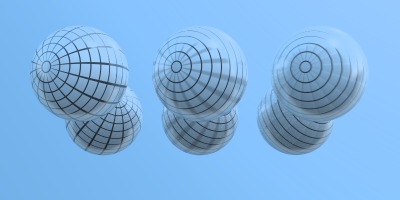 | anim-bluespheres.pbrt: This simple scene demonstrates the new motion blur feature added to pbrt-v2, showing three spheres above a mirror, rotating at different speeds. |
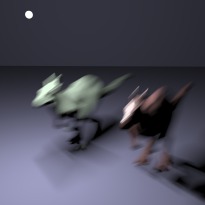 | anim-killeroos-moving.pbrt: Another simple animation example; note that both the killeroos and their shadows are blurred. (Killeroo model courtesy of headus/Rezard.) |
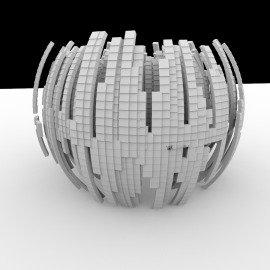 | arcsphere.pbrt: this model is one of the samples that comes with the procedural modeling system Structure Synth. It is rendered here using the ambient occlusion integrator. The model was exported to the pbrt format using the exporter in the exporters/structuresynth directory of the pbrt source code distribution. |
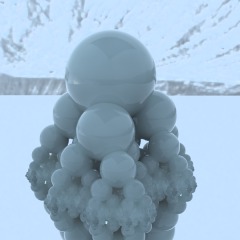 | ballpile.pbrt: this model was also generated by Structure Synth and was exported with the pbrt exporter. Here, subsurface scattering is used for rendering the balls. |
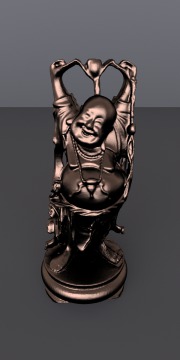 | buddha.pbrt: The "Happy Buddha" model (courtesy of the Stanford 3D Scanning Repository) is rendered with a realistic copper metal model. |
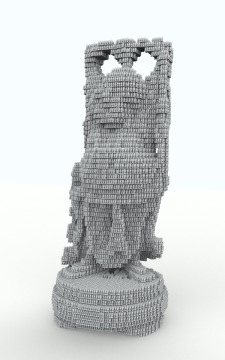 | buddhamesh.pbrt: In a clever example of object instancing (and recursion), Guillermo M. Leal Llaguno of Evolución Visual created a representation of the "happy buddha" out of hundreds of scaled-down instances of the happy buddha model. |
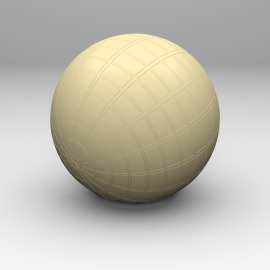 | bump-sphere.pbrt: sphere, rendered with bump mapping. |
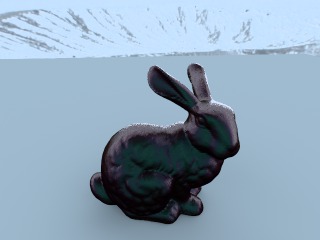 | bunny.pbrt: bunny model (courtesy of the Stanford 3D Scanning Repository), rendered with a paint BRDF measured by the Cornell Graphics Lab. |
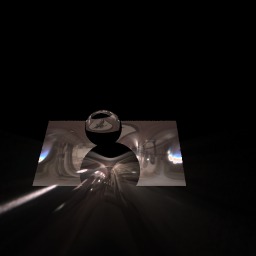 | caustic-proj.pbrt: image projected using the projection light source through a glass sphere, casting a caustic on the ground beneath it. |
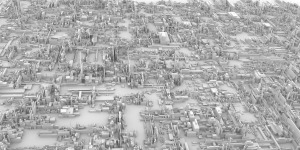 | city-ao.pbrt: city modeled by Mark Schafer using the procedural modeling system Structure Synth, rendered with the ambient occlusion integrator. |
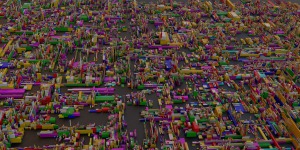 | city-env.pbrt: city modeled by Mark Schafer using the procedural modeling system Structure Synth, rendered with an environment map light source. |
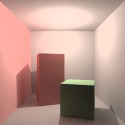 | cornell-mlt.pbrt: Cornell box, rendered using Metropolis light transport. |
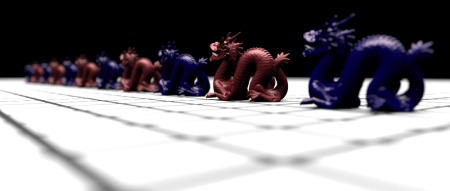 | dof-dragons.pbrt: series of dragon models, illustrating depth of field. (Dragon model courtesy of the Stanford 3D Scanning Repository). |
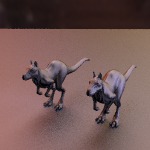 | killeroo-glossy-prt.pbrt: killeroo model rendered with glossy precomputed radiance transfer integrator. (Model courtesy headus/Rezard.) |
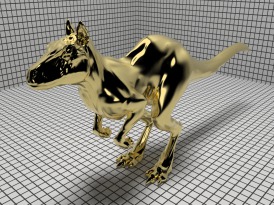 | killeroo-gold.pbrt: killeroo rendered with realistic gold metal material (model courtesy headus/Rezard.) |
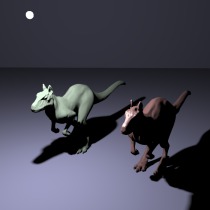 | killeroo-simple.pbrt: simple scene with killeroo models. (Model courtesy headus/Rezard.) |
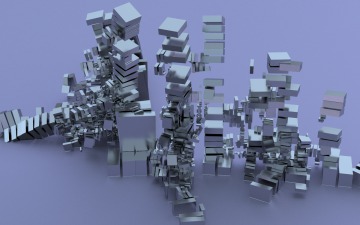 | metal-ssynth.pbrt: set of blocks with a realistic metal material. This model is an example from the the procedural modeling system Structure Synth, exported with the pbrt exporter. |
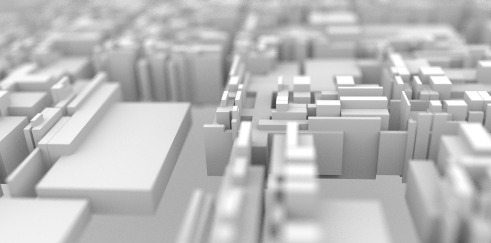 | microcity.pbrt: city modeled by Mark Schafer using the procedural modeling system Structure Synth, rendered with the ambient occlusion integrator and depth of field to give a sense of (small) scale. |
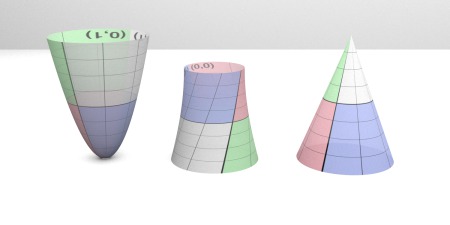 | miscquads.pbrt: various quadrilateral shapes--paraboloid, hyperboloid, and cone--rendered with a texture that illustrates their parameterizations. |
 | plants-dusk.pbrt: complex ecosystem model, rendered with an environment map simulating illumination at dusk. (Model form Deussen et al. Realistic modeling and rendering of plant ecosystems.) |
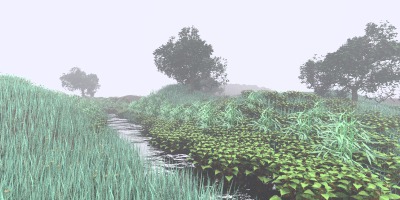 | plants-godrays.pbrt: complex ecosystem model, rendered with atmospheric scattering leading to beams of light. (Model form Deussen et al. Realistic modeling and rendering of plant ecosystems.) |
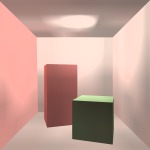 | probe-cornell.pbrt: Cornell box scene, rendered using a grid of irradiance probes projected into spherical harmonics. |
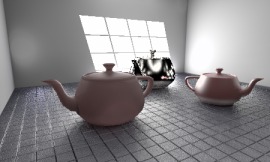 | room-igi.pbrt: simple scene of a room with teapots with a variety of reflection models, rendered using the "instant global illumination" algorithm. Most of the illumination in this scene is indirect; the illumination on the back wall is the only direct lighting. |
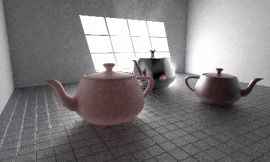 | room-mlt.pbrt: room with teapots scene, rendered with Metropolis light transport. |
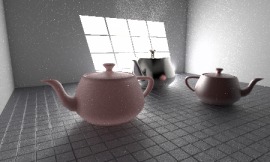 | room-path.pbrt: room with teapots scene, rendered with path tracing. |
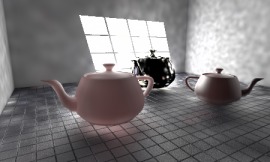 | room-photon-nogather.pbrt: room with teapots scene, rendered using photon mapping but not final gathering. Note the spolotchy artifacts from using the photons directly. |
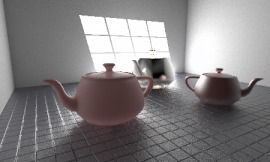 | room-photon.pbrt: room with teapots scene, rendered with photon mapping and final gathering. |
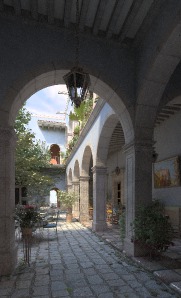 | sanmiguel.pbrt: this scene was modeled by Guillermo M. Leal Llaguno of Evolución Visual, based on a hacienda that he visited in San Miguel de Allende, Mexico. The scene was modeled in 3ds max and exported to the pbrt file format with a custom script written by Guillermo. The scene features just over 2.5 million unique triangles and has a total geometric complexity of 10.7 million triangles due to the use of object instancing; the pbrt files that describe the scene geometry require 620 MB of on-disk storage. There are a total of 354 texture maps, representing 293 MB of texture data. |
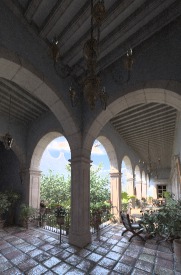 | sanmiguel_cam1.pbrt: another view of the San Miguel scene. |
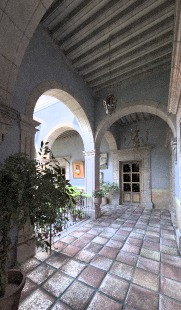 | sanmiguel_cam3.pbrt: another view of the San Miguel scene. |
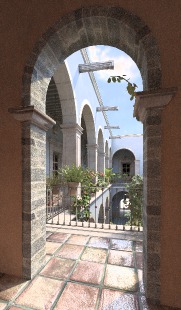 | sanmiguel_cam4.pbrt: another view of the San Miguel scene. |
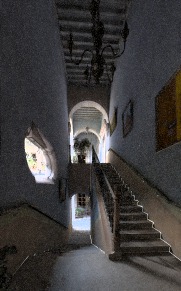 | sanmiguel_cam5.pbrt: another view of the San Miguel scene. |
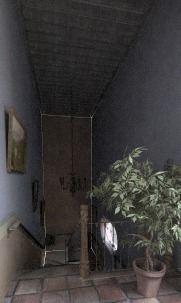 | sanmiguel_cam6.pbrt: another view of the San Miguel scene. |
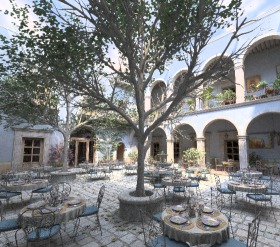 | sanmiguel_cam14.pbrt: another view of the San Miguel scene. |
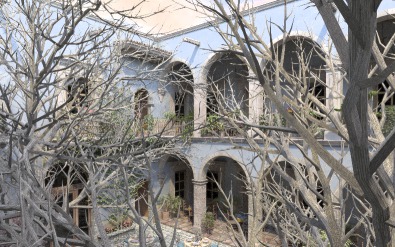 | sanmiguel_cam15.pbrt: another view of the San Miguel scene. |
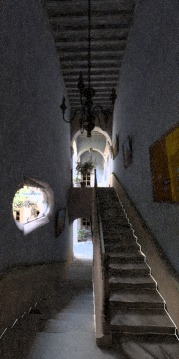 | sanmiguel_cam18.pbrt: another view of the San Miguel scene. |
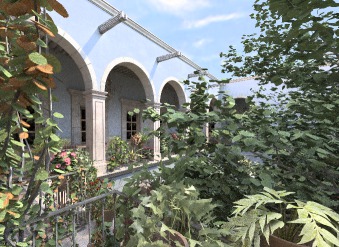 | sanmiguel_cam20.pbrt: another view of the San Miguel scene. |
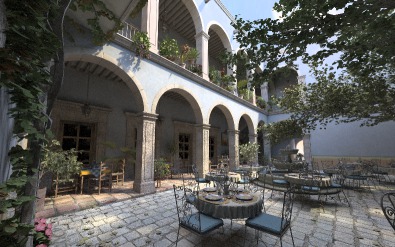 | sanmiguel_cam25.pbrt: another view of the San Miguel scene. |
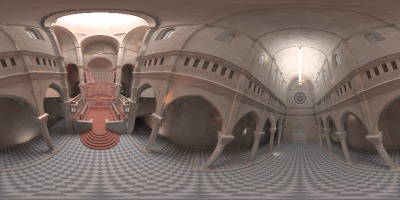 | sibenik-igi.pbrt: Sibenik cathedral model, rendered using "instant global illumination". Model courtesy of Marko Dabrovic and Mihovil Odak. |
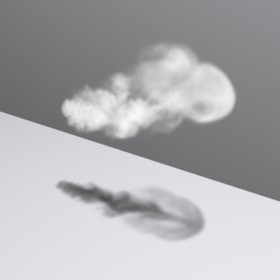 | smoke-2.pbrt: volumetric smoke dataset, rendered with the single-scattering volume integrator. (Dataset courtesy Duc Nguyen and Ron Fedkiw). |
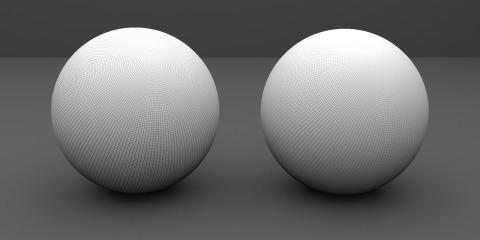 | sphere-ewa-vs-trilerp.pbrt: sphere with high-frequency texture map. Left: rendered with elliptical weighted average (EWA) filtering algorithm, right: rendered with trilinear MIP-mapping. Note how EWA is substantially more effective at resolving fine detail in the texture. |
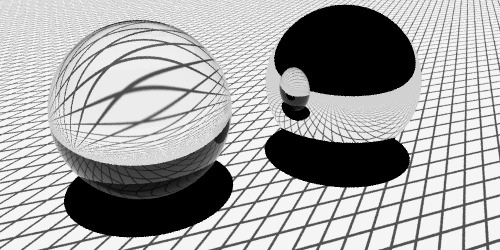 | spheres-differentials-texfilt.pbrt: glass (left) and mirror (right) spheres, reflecting high-frequency texture map. Thanks to texture filtering with ray differentials, the reflections of the texture are anti-aliased well. |
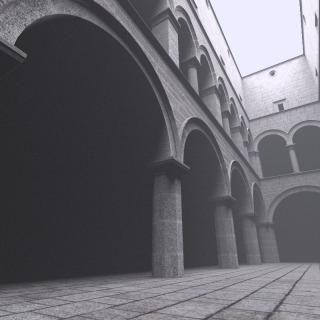 | sponza-fog.pbrt: Sponza model rendered with scattering volumetric fog. Model courtesy of Marko Dabrovic and Mihovil Odak. |
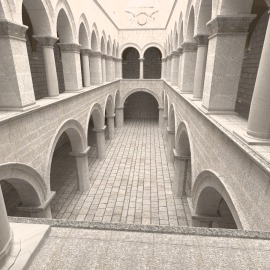 | sponza-phomap.pbrt: Sponza model rendered with photon mapping. Model courtesy of Marko Dabrovic and Mihovil Odak. |
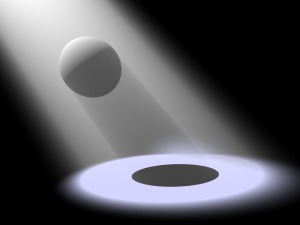 | spotfog.pbrt: spotlight shining through a scattering medium. The sphere casts a volumetric shadow. |
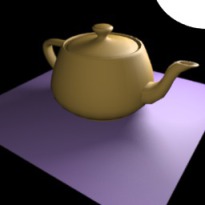 | teapot-area-light.pbrt: simple scene with a teapot illuminated by a disk area light source. |
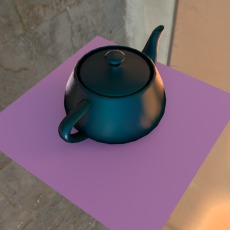 | teapot-cornell-brdf.pbrt: teapot rendered with a realistic paint BRDF measured by the Cornell Graphics Lab. |
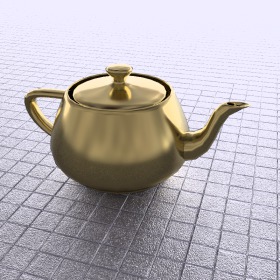 | teapot-metal.pbrt: teapot with measured gold metal material. |
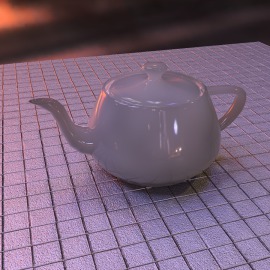 | teapot-subsurface.pbrt: teapot exhibiting subsurface scattering. |
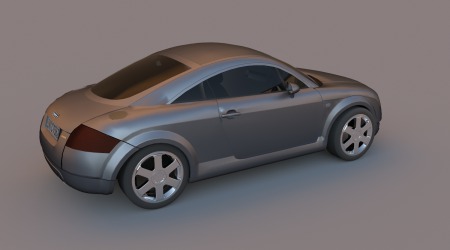 | tt.pbrt: Audi TT car model, illuminated with environment map light source. Model courtesy of Marko Dabrovic and Mihovil Odak. |
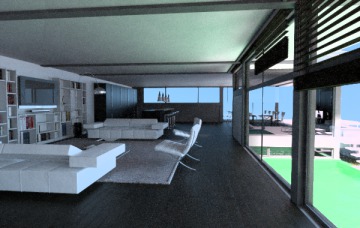 | villa-daylight.pbrt: modern villa scene during daytime, rendered using Metropolis light transport. This is an extremely difficult model to render for many light transport algorithms: because almost all illumination passes through one or more glass windows before illuminating the interior, traditional efficient direct lighting techniques aren't useful for this scene. Model courtesy of Florent Boyer. |
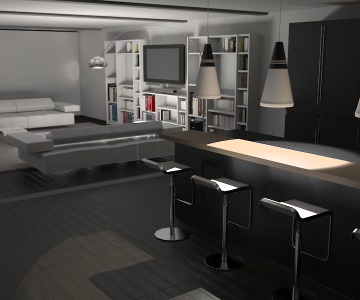 | villa-igi.pbrt: modern villa scene at night-time, rendered using the "instant global illumination" integrator. Model courtesy of Florent Boyer |
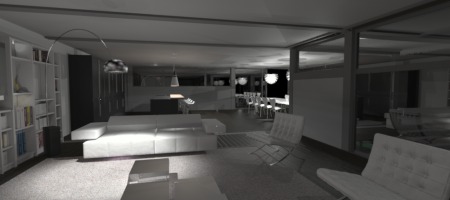 | villa-lights-on.pbrt: another view of of Florent Boyer's modern villa at night time, also rendered using instant global illumination. |
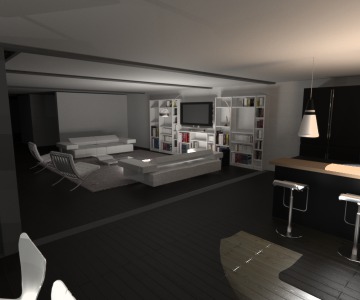 | villa-photons.pbrt: modern villa scene Model courtesy of Florent Boyer, rendered using photon mapping for indirect lighting. |
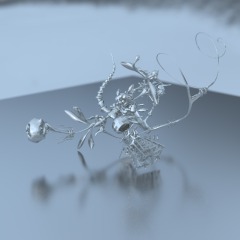 | yeahright.pbrt: Keenan Crane's interesting yeah, right model, rendered using a realistic silver metal model. It is reflected by a material that is a realistic model of aluminum and rendered with Metropolis light transport. |